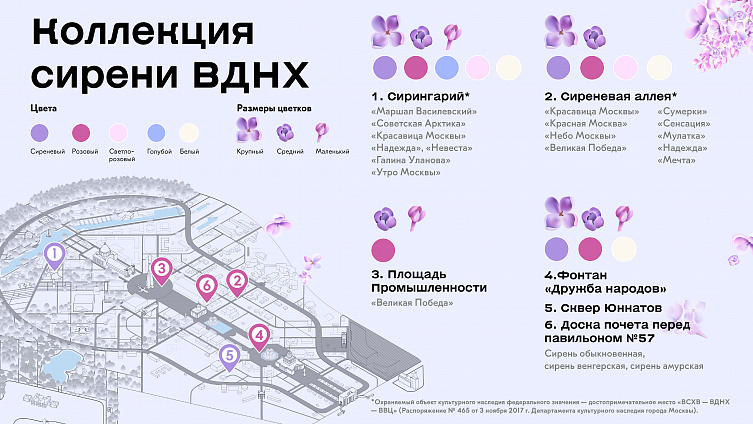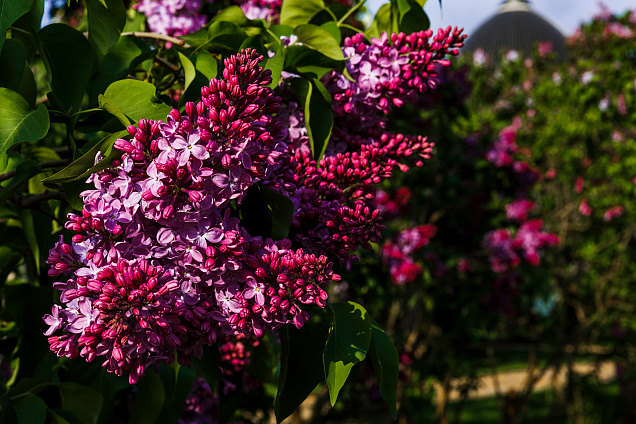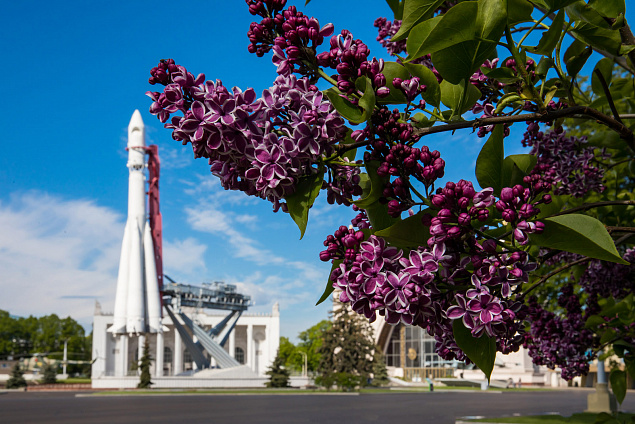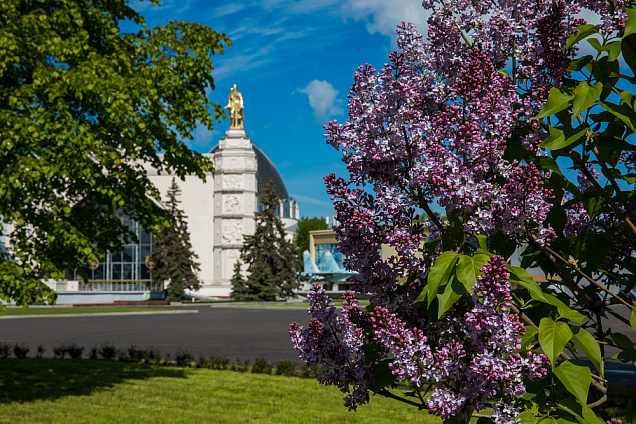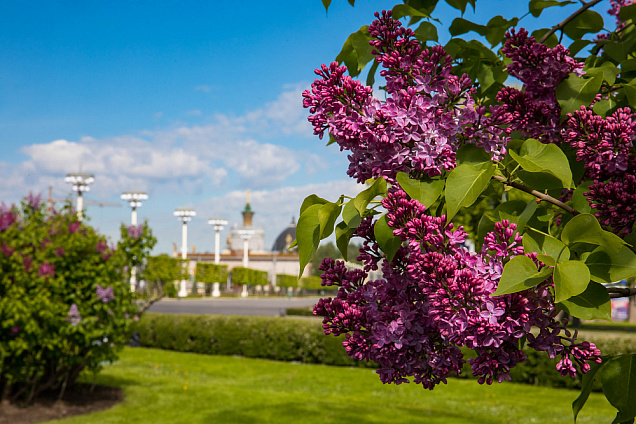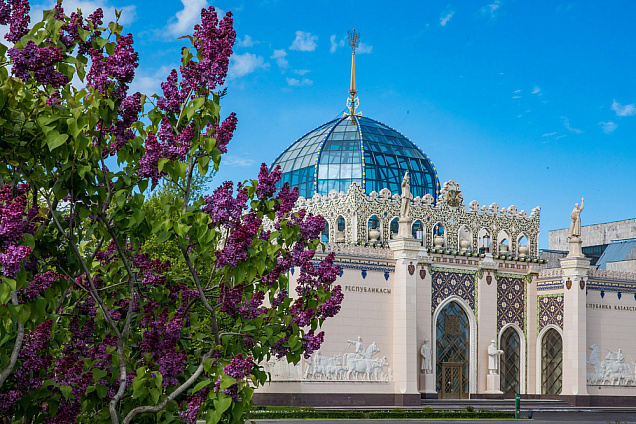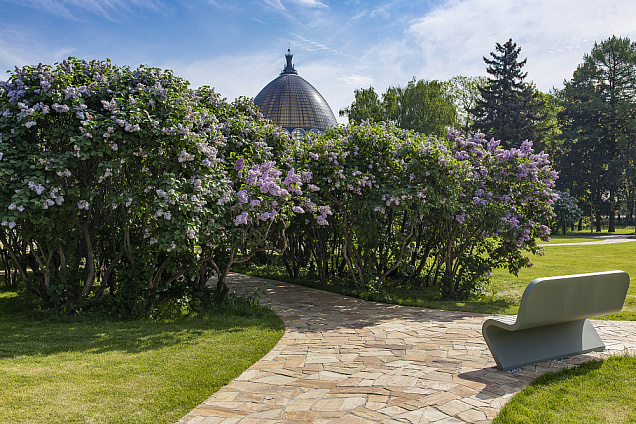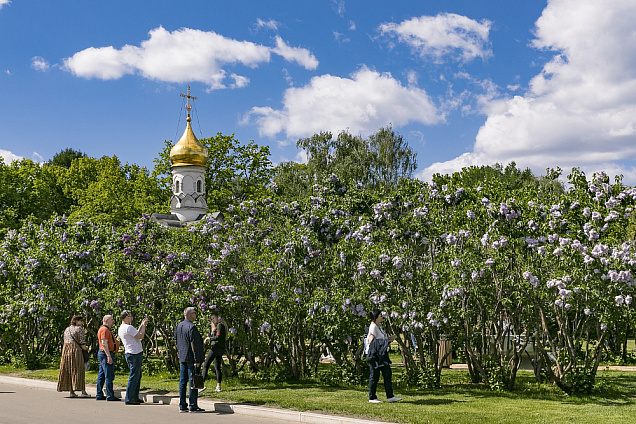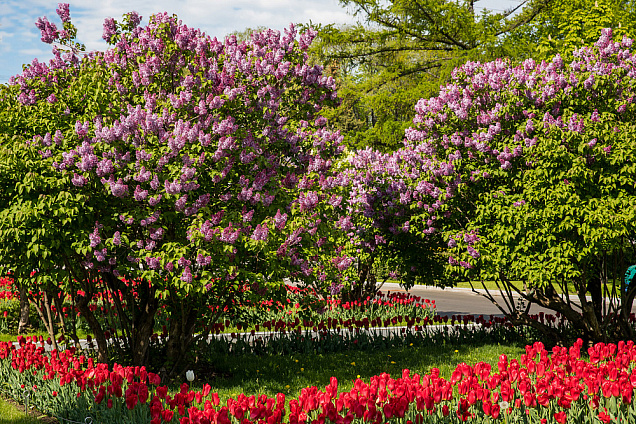May is the traditional blooming time for lilacs at Russia's No. 1 Exhibition. Luxuriant tassels of the lilacs bred by Soviet plant selectionist Leonid Kolesnikov readily catch the eye when you walk around VDNH. We have prepared a VDNH guide with updates on where lilacs are in blossom right now so you don't miss out on its splendour, fragrance and diversity.
The plant breeder credited with the most valuable and rare genera of lilac is Leonid Kolesnikov. Kolesnikov, who worked as a driver after the 1917 Revolution, bred lilacs in his own garden as a hobby. He perused old catalogues and roamed botanical gardens, nurseries and historic estates in search of rare seedlings. He cross-bred and selected many fine and delicate genera of lilac that earned nationwide and international recognition.
There are no more than 50 Kolesnikov-bred genera of lilac left in the world.
Lilac blooming sites
There is a lilac garden behind Pavilion No. 29 Floriculture and Gardening at VDNH. The garden was planted in 1985 for the 40th anniversary of Soviet Victory in the Great Patriotic War. There are some 30 genera of lilac growing in this garden, bearing names such as Marshal Vasilevsky, Bride, Soviet Arctic, Moscow Beauty, Hope, Galina Ulanova, Morning in Moscow and others. Andrei Gromov, a pupil of Kolesnikov's, planted them all at VDNH during the Soviet era.
Another place to admire some rare breeds of lilac is Sirenevaya (Lilac) Alley. The Alley was planted in the 1960s with some of the finest lilac specimens of ordinary French selection. Some of them have survived, regaling VDNH visitors' eyes to this day. Lilac Alley was rejuvenated in 2015: new bushes were planted where none had survived. The lilac breeds planted here have names like Twilight, Moscow Beauty, Red Moscow, Moscow Skies, Great Victory, Dream, Sensation, Mulatto and Hope, to name a few.
The historic lilac plantings around the Vostok spacecraft have been restored. Lilac bushes of the Great Victory genus have been planted on Industry Square. Lilacs are also fragrant and plentiful around the Friendship of Peoples and Stone Flower fountains and in Yunnatov Park. New lilac bushes have been planted between Pavilions No. 57 and 71.
Walking around VDNH, one comes across both ordinary and more rare kinds of lilac. Some of them—Hungarian Lilac and Amur Lilac, for instance—blossom later in the summer.
Rare genera
The pearly white blossoms of Moscow Beauty lilac beautify VDNH grounds every spring. Moscow Beauty was bred in 1947, when Moscow celebrated its 800th birthday with great pomp and fanfare. This genus of lilac gave currency to the concept of 'Russian lilac' in the world. Some amazing specimens of Russian lilac occur in the Buckingham Palace Park in London, the Royal Botanical Gardens of South Ontario, Canada, the US national parks Holden Arboretum and Arnold Arboretum and even outside the Capitol building in Washington D.C.
Red Moscow is another historic lilac genus opening the lilac blooming season at VDNH in May. It is distinguished by strong, upward-looking blossom clusters of an intense purple colouration. This is one of the more widespread breeds of lilac nurtured into existence by Leonid Kolesnikov.
Dawn of Communism is a lilac genus that turns heads with its remarkably large flower buds of a deep purple-red colour with violet iridescence. The flowers of Leonov lilac look like an assemblage of multicoloured cups, mauve on the outside, violet inside. Insulated plantings of all these lilac genera occur everywhere at VDNH.
Dear Visitors, Lilac Garden and Lilac Alley are protected features with numerous rare and valuable plantings. We ask you kindly to be protective of nature. Please do not break branches or walk on planted soil. Let us preserve these miracles of nature for generations to come!
